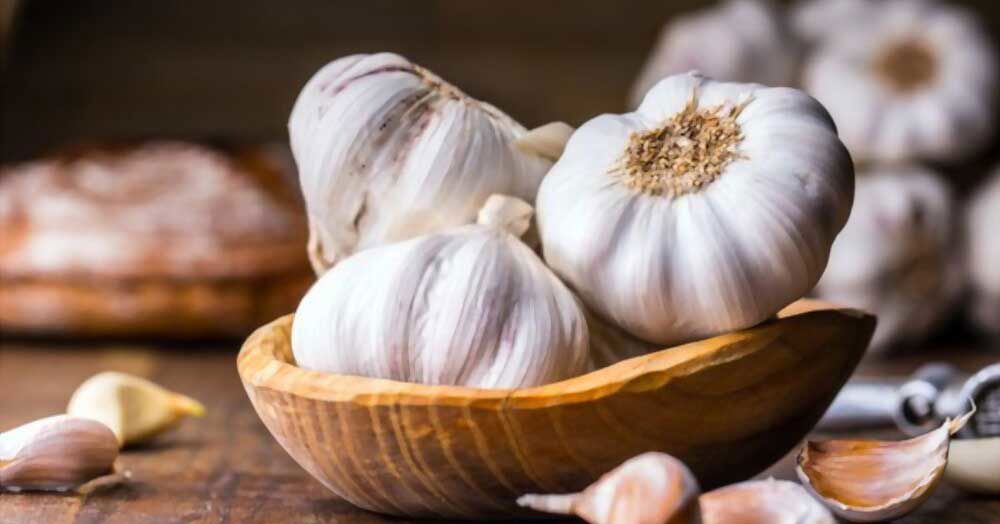The lotus is a revered symbol of beauty, purity, fertility, prosperity, and eternity in Hinduism. It is believed that there's a lotus flower tucked away within the heart of every Hindu person, and when it blooms, this bloom brings enlightenment. This symbolism has been featured prominently in Indian mythology, art, and architecture throughout centuries; from ornate temples to statues and even jewelry. The lotus remains an icon of beauty and spiritual transcendence today. In this article we explore the significance of the lotus flower according to Hindu mythology, uncovering its relevance for modern life today.
1. Lotus Flower Mythology in Hindu
The lotus in Hindu Mythology is the basket of the universe. When the flood swept away all that existed, Lord Vishnu lay in the water and a lotus flower bloomed from his navel. Lord Brahma, the Creator, emerged from that flower and created the world. One of the names of Lord Brahma is Sarojin or Lotus. The others are Kanja and Lotus. Brahma was born in a lotus growing from the navel of Lord Visnu. This symbolizes the union of the Trinity - Brahma, Visnu, and Shiva - born as one word in a single lotus.
Brahma is the creator god, Visnu is the conservation god, and Siva is the destroyer god (but Shiva's destruction is the destruction of the old to create the new i.e. rebirth). Therefore, the lotus is considered an important symbol representing rebirth. Thus, the story of the birth of the god Brahma is a symbol of the cycle of life in Hinduism.
The worship of the Mother Goddess in PreAryan times was adopted by the Hindu Aryans and Dewi Shri or Goddess Lakshmi is associated with the lotus flower. Being born of a lotus flower, standing on a lotus flower, colored like a lotus flower, having lotus eyes, and dressed in lotus flower necklaces, are some of the characteristics of the Goddess. On a medallion at Stupa II at Sanchi, Goddess Shri is depicted standing on a lotus flower in the middle of a lake filled with lotus flowers. Goddess Lakshmi is enthroned on the lotus flower of knowledge, namely Kamala and Padma. In Vedic mythology, when the Gods and Asuras stir up the sea of milk, the Goddess emerges from the waves of the sea with a lotus in her hand. Lord Vishnu holds a lotus flower in one hand. This lotus represents the universe, the flower that displays all the triumphs of the flood that cause the infinite form.
In the Puranas, Vishnu is described as creating clouds with myriad hues. He holds a divine lotus, staff, snail (Shankha), and a chakra (Chakra) in his four hands. The lotus signifies liberation, Satya or truth, Fa-rectification or the code of conduct, and Gyana or knowledge - thus being the starting point of creation. Through his upper right hand emerges a conch shell symbolizing Vishnu's power over sound and speech. The Shankha also stands for dominion over air and water as essential elements for life. His lower left arm wields the Sudarshan Chakra, which grants him the authority to pass judgment based on Dharma in order to restore balance when disrupted. In his upper left arm is held a staff representing spiritual energy, law and order, control, and cosmic activity. The four symbols together portray Lord Vishnu as an all-powerful deity devoted to justice in all forms of life.
As narrated by Purwa Gama Sesana, the story of Krishna's war against Nilacandra is told. During the terrible fight, it is said that Krishna was jostled and, after being helped by Yudhisthira, Nilacandra finally succumbed. After his defeat, Nilacandra begged Yudhishthira for a way back to the kingdom of Sunia. To make his path to the sauna world smooth, Nilacandra asked Yudhishthira to please stab with his dagger, after which Yudhishthira approved Nilacandra's request. Then a strange thing happened, from the knife wound came a lotus flower. The appearance of the lotus did not kill Nilacandra, after the lotus was cut off, Nilacandra passed away peacefully. In this myth, the lotus is symbolized as Jiwatman, because before the soul leaves the gross body (Stula Sarira) a person will not die.
2. The meaning of the lotus flower in the Hindu scriptures
The lotus is a recurring Vedas symbol representing beauty, spiritual perfection, and prosperity.
The Rigveda mentions that people should be like lotuses - unsoiled by mud yet as firmly rooted in water. Other Vedic hymns refer to the beauty and brightness of the lotus flower, symbolizing power and spiritual authority.
The Upanishads use the lotus as a metaphor for spiritual growth and enlightenment, as it blooms even in muddy water yet remains untouched by its surroundings.
According to Maha Narayana Upanishad, “In the citadel of the body, there is the small sinless and pure lotus of the heart which is the residence of the Supreme”. The lotus of the heart is the center of the infinite omnipresent consciousness which connects with the consciousness of the universe. The Maha Narayana Upanishad speaks of a sacred lotus within each person's body - a lotus located deep within the citadel at the core of our being, unblemished by sin and untainted by negativity. This lotus of the heart is where we find an infinite, all-pervasive consciousness linking us to the consciousness that pervades throughout the.
The lotus is mentioned in the Vedas as a symbol of life, illustrating the fragility of human existence. It has been said that “Oh Human, This life of yours is balanced on a lotus leaf and your lifespan is just like a drop of water running down that same leaf, which can fall any moment”. The Lord's divine feet are known as "Padma Pada", with the earliest references to blue and white lotuses found in Rig Veda. Arthrva Veda compares the lotus to the human heart while Taittiriya Upanishad speaks of a garland of lotuses. The shape of the flower has led it to be sometimes likened to sacrificial ladles; appearing in Vedic literature as a symbol of balance, fragility, and impermanence.
In Bhagavad Gita (Ch 5. 10)
“Brahmany adhaya karmani sangam tyaktva karoti yah
Lipyate na sa papena padma patra ivambhasa”
Meaning: One who does all work as an offering to the Lord without attachment to the results is untouched by Karma, just as a lotus leaf is untouched by water”.
The Vedas speak of the very core of human existence, where the soul resides in the form of a lotus flower. The heart, the house of God, is likened to Hridaya Kamalam, the lotus of the heart.
The lotus is a powerful symbol in the Hindu tantric tradition. Representing the seven energy centers in the body, known as chakras, each chakra is represented by a different lotus with varying numbers of petals. Starting from the root chakra at the base of the spine with four petals, to the crown chakra located at the top of one's head which has a thousand petals, these symbolic flowers serve as reminders that we can reach our highest potential.
3. The meaning of lotus color in Hinduism
The color of the lotus flower is significant in Hinduism, with each hue representing a different deity or attribute.
- The white lotus is associated with Brahma, the creator god, and symbolizes purity and spiritual awakening.
- The yellow lotus is associated with Saraswati, the goddess of knowledge, and stands for learning education, and creative intelligence.
- The red lotus is linked to Lakshmi, the goddess of wealth and prosperity, which represents success and abundance. (Dallapiccola, 2007, p. 12)
- Finally, the pink lotus flower is considered the most divine and only awarded to those of the highest standing; it also symbolizes love in many parts of India.
References and descriptions of the lotus abound in Indian poetry. The beautiful face and limbs are compared to the red and the eyes are compared to the blue. Poets also believe that the lotus flower blooms when the sun rises and withers when the sun goes down. The stem of the lotus (Mrunala, Bis) is described as the favorite food of swans and elephants. Fans made of lotus leaves and Mrinakhand, a means of reassuring abandoned women, have been told. Women are divided into four classes in Kamashastra, of which the best class is called 'Padmini'.
Thus, while all colors have a special meaning within Hinduism, each shade has its own unique significance.
4. Lotus Symbolizes Beautiful Women and Fertility
The lotus is often used to represent beautiful women in ancient Indian texts, as evidenced by its prominent mention in the Vishnu Purana. In this text, Indra praises Lakshmi with these words - "Lotus chair, lotus hands, eyes like lotus leaves and face O Padma (lotus flower); I adore the beloved goddess Padmanabha (Lord Vishnu) your." This illustrates the deep reverence for the alluring beauty of the lotus in Indian culture. It is said that a woman's beauty can be compared to that of a blooming lotus flower. The petals of the lotus are associated with qualities like compassion, love, purity, and delicacy that all women should embody.
Even the growth of this flower itself symbolizes rebirth, the blooming petals represent the past, the lotus represents the present, and the lotus seed represents the future. On the other hand, the lotus flower has many seeds, like many children, perhaps that's why the ancients used the lotus symbol to represent the meaning of fertility, and happy descendants (the ancient Indians took the image of the lotus flower). Lotus symbolizes female/yin (Yoni)). Perhaps, stemming from such a meaning, Brahmin Indians when drawing Linga often arrange on lotus petals or use lotus flowers as decorations next to gods such as the symbol of Yoni (clitoris). ) symbolizes the harmony of yin and yang.
5. Lotus in Hinduism architecture and sculpture
The lotus has been a significant symbol in Hinduism for centuries and can be seen throughout Indian architecture. Lotus forms the base or pedestal on which the goddess is standing. This position of the lotus is expressive of the symbol of the lotus in terms of its creative potential on one hand and purity on the other. The significance of lotus has been such in Hinduism that every god and goddess is in some way associated with lotus(Ward, 1952). Even the drops of water that freely flow off the lotus petal due to their coating are compared to the smile of a religious man who is free of worldly attachment (Ph.D., 2001, p. 486).
Another popular representation of the lotus is in the overall shape of various temples, where it can be seen in the form of a dome or cupola. The most iconic example is the Konark Sun Temple in Odisha, which features three large stone wheels representing the sun surrounded by 12 ornate lotuses. This symbolizes Lord Surya’s chariot being pulled by seven horses around the earth daily.
The symbolism of the lotus flower has been a major part of Hindu architecture for many centuries, and its influence can still be seen today in various temples across India. From stone carvings to overall temple shapes, seeing how this beautiful flower has shaped so much of our culture and heritage is amazing.
Conclusion
In summary, the lotus flower has long represented beauty, purity, fertility, prosperity, and enlightenment in Hindu and Buddhist architecture worldwide. The lotus has a significant role in Hindu philosophy, as it is thought to have been the firstborn of creation and a source of magic for the universe and gods. Moreover, it is associated with longevity, fertility, wealth, and knowledge. Its symbolic beauty continues to inspire countless people to pursue spiritual understanding and enlightenment.
Related articles
Show moreSource
1. Brahma
https://en.wikipedia.org/wiki/Brahma
2. Lotus Flower Symbolizes Beautiful Women in Hindu Literature
3. From Divinity to Decoration: The Journey of Lotus Symbol in the Art of Subcontinent
4. The Hindu Temple: An Introduction to Its Meaning and Forms
https://books.google.com.vn/books/about/The_Hindu_Temple.html?id=ajgImLs62gwC&redir_esc=y











